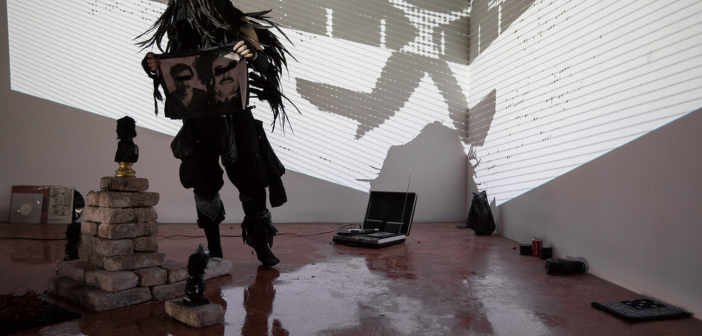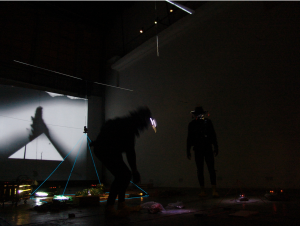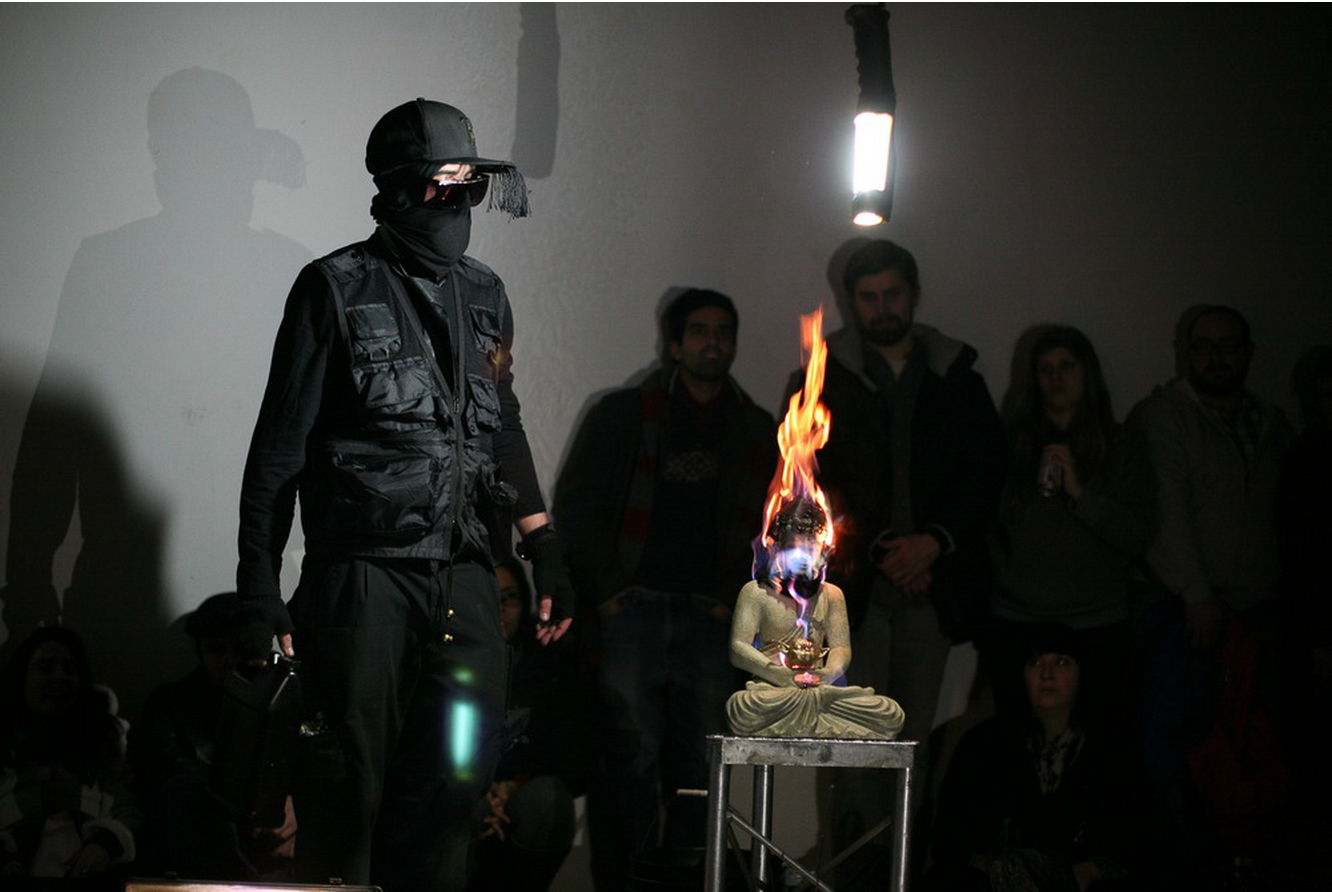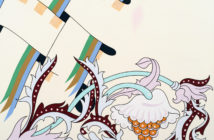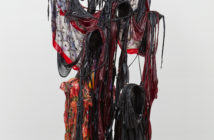Every two years the Institute of Contemporary Art Boston (ICA) selects up to four Boston-area artists to receive the James and Audrey Foster Prize. In addition to a cash award, finalists are given the opportunity to mount a show in the ICA gallery space. Since 1999, this has been a time for the ICA to showcase local talent, ultimately contributing to a larger discourse about the role that arts institutions play in supporting Boston’s creative economy.
The 2015 Foster Prize has been awarded to Ricardo De Lima, Vela Phelan, Sandrine Schaefer, and the collective kijidome; a four-way preferment that is unique in the history of the prize. This year’s line-up is also significant in its focus on performative and curatorial practices.
In the weeks leading up to the Foster Prize exhibition, we will be presenting a series of interviews with each of the Foster Prize recipients. Our next interview in the series is with artist Vela Phelan.
Big Red & Shiny: How were you first approached about being considered for the Foster Prize?
Vela Phelan: I received an email from John Andress asking me if I was available to meet with him and talk about my art. We meet a couple weeks after and he informed me I was one of 7 Boston artists they had chosen to propose a project for the 2015 Foster Prize Exhibition at the ICA. I proposed "Osbcurus Fidem", pairing a site-specific video altar with live performances dedicated to Jesus Malverde, a folk legend, elevated to the rank of sainthood by Mexican narco-traffickers. The installation and performances are devotions to Malverde’s notoriety, faith and the ways in which religion, material culture and spirituality are mixed and shaped through technology and a collective consciousness. Throughout the project, I will perform "Obscurus Novena," nine live actions created in honor of Malverde. These performances will take place within the ICA, the surrounding waters and in public spaces in Boston. I’ll also be visiting the video altar weekly, tending to its soundscapes, objects and gravel.
BR&S: Why choose Jesus Malverde as a figure for performative devotion in your Foster Prize exhibition?
VP: This Jesus Malverde path began in early 2014 when I was struggling with continuing all my devotional relationships with E.T., Buddha, El Niño Dios, Big Bird, Laa Laa, SpongeBob and Mickey Mouse. I had been studying gang culture and their use of occult symbols and religious practices for several years. One day I was Google image searching El Chapo Guzman and I came across an image of Jesus Malverde next to one of El Chapo and noticed the uncanny resemblance El Chapo and Jesus Malverde shared. El Chapo and Malverde not only look alike but they both walked the path of extreme good and extreme evil and I would not be surprised if El Chapo Guzman becomes an uncanonized saint 100 years from now. Although it is not known whether there really was a "Jesus Malverde," legend has it that in the late nineteenth century lived in Sinaloa a bandit with this name. The most common account of his death is that he was shot and hanged by local police. His body was supposedly denied proper burial, and was left to rot in public as an example. Jesus Malverde has developed into a syncretic religion that unites beliefs of popular Catholicism with other beliefs that the Catholic Church considers superstitious. This line between superstition and historical reality is hard to define in all religions and is precisely what I am attracted to. In some communities, the figure of Jesus Malverde has reached a high sainthood rank equal to figures like San Judas Tadeo, La Virgen de Guadalupe, El Sagrado Corazón and Santa Muerte. In general, the cult is strongly impregnated with the habits and customs of Catholicism. However it is also impregnated with modern urban costumes; he is a changing canvas I can manipulate and expand upon. This makes Jesus Malverde the perfect choice for me to use as a foundation for "Obscurus Fidem." "Obscurus Fidem" means "Unknown Faith" and that is what I am really devoting myself to. Malverde is just the seed of it all.
BRS: Ceremony has often played an important role in your work—the museum is a contemplative, pseudo-temple where audiences expect to see a certain kind of ceremony. How will the authority of the ICA as an institution play into your upcoming exhibition?
VP: Ceremony does indeed play an important role in my work. My connection to ceremony is focused around objects, sounds, smells, and architecture, which are always key components in any ceremony. I believe that any place can be a contemplative temple—even a museum—and I never assume or limit myself with concerns of what an audience expects to see or experience in any specific location or their own relationship with any given subject mater.
BRS: Your work combines several distinct spheres, each of which carries a different set of expectations with respect to audience participation. What is the ideal relationship you would like to have with your audience?
VP: My relationship with the audience has always been unspoken and unassuming. Each audience member is a unique energy that I have no interest or ability to prescribe with expectations. My relationship with objects, sound, space, scent and light is more important. If I focus my intention on these elements of my actions, the energy expands and ideally the audience is enveloped in the moment, participating passively and often unknowingly with me. It’s like hypnosis but in a waking state of mind.
BRS: How did your fascination with ritual, particularly the intersection of historic and contemporary rituals, first take root?
VP: In 1995 I lived in Tuscaloosa Alabama and I was lucky to meet some extremely magical individuals who shared with me the same drive to discover new ways of connecting with a universal cosmic energy and parallel dimensions. My friend and collaborator Malcolm Smith and I started a performance duo called NOX (0) meaning "Night of The Fool". NOX (0) was dedicated to the pursuit of modern rituals through the appropriation of technology, transgression of the mirror of the unknown and the alchemy of urban and organic materials. This was the beginning of it all and it sprouted from a seed called collaboration. Collaboration is the root of everything I create: assemblages, installations, video mixes and sounds are all collaborations with hidden, found, ephemeral and stolen energies. Collaborating with another person is similar but has its own unique qualities; it is the constant exchange of energies that sets it apart. That exchange and intersection of energies is my most valued form of expression. Everything is collaborating with something else. Nothing exists alone.
BRS: What are some specific challenges you face in your practice as a performance artist working in Boston?
VP: For artists, every city has its challenges, yet I am not one to complain or focus my energy on these problems. It’s up to us to express ourselves regardless of the circumstances. If our intentions continue to be strong and pure, then doors will open up and walls will be torn down. Boston is an amazing city with a strong performance art community and I am extremely honored to be a part of it
BRS: Is there anything that the Foster Prize exhibition has allowed you to do that you haven't had the chance to explore in other venues?
VP: Absolutely! The Foster Prize exhibition has given me my own temple, playground and garden for almost the entire summer where I can build a strong and long lasting relationship with Jesus Malverde and the unknown. I have never been given such a generous opportunity to explore.
Vela Phelan's work can be seen at his website http://templeofmessages.com.
The schedule of his upcoming performances at the ICA Boston can be seen below.
[] Obscurus Novena
I. Obscurus Conventus. 4/28/2015 6-8pm
Unity with Malverde. This action will be a part of the Obscurus Fidem installation. It will be a passive action during the opening of the Foster Prize Exhibit. A beginning.
II. Obscurus Tutor. 5/14/2015 10am-4pm
We are the watchers, the protectors, and the guardians of the ICA. Malverde and Vela will be located at the main entrance for one day
III. Obscurus Gravitas. 5/23/2015 10am-4pm
Faith is heavy, it can weigh us down, but onward we go, carrying the weight. Vela will walk around the streets of Boston carrying Jesus Malverde.
IV. Obscurus Adeo. 05/31/2015.10am-3pm
To approach faith; to approach a holy place of worship, but not go in. Vela and Jesus Malverde will visit several churches and holy places. This action will happen on the holy day of Sunday. They will not enter, they will simply visit.
V. Obscurus Ipsum. 6/11/2015. 6:30-8pm
To honor the space of the unknown self. Special guests TOOMS<https://soundcloud.com/tooms-4>, will join Vela for two hours with Jesus Malverde’s shadow inside the ICA theater.
VI. Obscurus Purgamentum. 6/28/2015. 10am-4pm
To collect what is discarded. To acknowledge the discarded. To pay respect to the discarded. To discard it again. For 14 days all of the trash that is produced within the walls of the ICA will be collected in black garbage bags. Vela and Malverde will ascend the mountain of garbage bags and take their place upon the trash throne. They will remain there for 6 hours. The trash will then be hauled away.
VII. Obscurus Loginquitas. 6/20/2015. 10am-4pm
To achieve and experience distance and remoteness. Vela and Jesus Malverde will spend the day together on a rowboat in Boston's fort point channel.
VIII. Obscurus Commoneo. 7/19/2015. 12pm-4pm
To remember and revisit the good/dark path that made Jesus Malverde who he is today. This is the final return of Jesus Malverde to the Obscurus Fidem installation. Vela will be spending time with Malverde.
IX. Obscurus Exitus. 7/31/2015.6:30pm-8:30pm
The end, the closing, the final invocation in the Obscurus Novena with Jesus Malverde. This will happen 9 days before the closing of the exhibit in the Obscurus Fidem installation. El fin.

